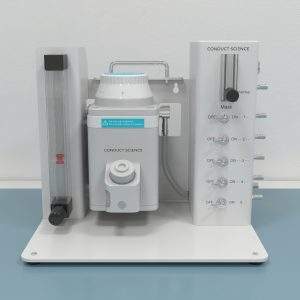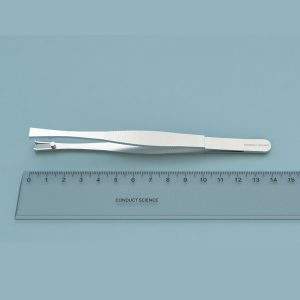The VR Radial Arm Maze is an advanced virtual reality simulation designed to study spatial navigation, memory, and cognitive function in a controlled environment. This tool replicates the traditional radial arm maze, a well-established experimental setup in neuroscience and psychology, within a virtual reality setting. By leveraging the immersive capabilities of VR, this simulation provides a highly adaptable and interactive platform for both researchers and participants.

Simian Labs is a laboratory focused on developing innovative solutions in the field of technology and biotechnology. Specializing in research and development (R&D), Simian Labs works on projects that aim to integrate artificial intelligence with biology to create advanced tools that enhance the understanding of complex biological processes and enable significant advancements in areas such as medicine, pharmacology, and bioinformatics.



bool(false)
The central region of the maze is roughly round with a radius of 60 pixel units, and each arm (8) is 120 pixels in length by 32 in width. 45-degree angles between each arm or each arm (length = 4 m, width = 1 m) was surrounded by walls (height = 4 m
Brick structure in grey sitting on grassland, surrounded by woods and hills under blue sky in a later afternoon of the day.
The maze is divided into three different regions: baiting area (outmost 10% length of each arm), arm passage (invisible doorsill is within 10% of the length of the interior), central area (rest region).
Division of the areas of the maze allows for monitoring and assessing the participant’s behavior, and these regions are coded for facilitating post-experiment analysis.
Arms are baited with rewards displayed as a “$” sign
A participant is regarded as entering an arm only when the participant passes through this sill toward the exterior end of the arm.
Parameters measured every 1/60 s during each block:
This condition is terminated following the number of trials that a given participant needed to obtain all eight rewards in the learning condition. If a participant required 18 trials to find all eight rewards in the learning condition (i.e., eight correct and 10 error trials), they would be given 10 unbaited trials randomly in the control condition.
Randomized 4x baited and 4x unbaited arms, 10 trials, participant is positioned at the center of the maze in a random orientation for every experiment session and trial.
Xu, D., Hao, X., Wang, Z., Duan, Y., Liu, F., Marsh, R., Yu, S., & Peterson, B. S. (2012). A Virtual Radial Arm Maze for the Study of multiple Memory Systems in a Functional Magnetic Resonance Imaging Environment. The International Journal of Virtual Reality : A Multimedia Publication for Professionals, 11(2), 63. https://www.ncbi.nlm.nih.gov/pmc/articles/PMC4564131/
Kim, H., & Park, J. Y. (2018). Spatial Learning and Memory Using a Radial Arm Maze with a Head-Mounted Display. Psychiatry Investigation, 15(10), 935-944. https://doi.org/10.30773/pi.2018.06.28.3
Marsh R, Tau GZ, Wang Z, Huo Y, Liu G, Hao X, Packard MG, Peterson BS, Simpson HB. Reward-based spatial learning in unmedicated adults with obsessive-compulsive disorder. Am J Psychiatry. 2015 Apr;172(4):383-92. doi: 10.1176/appi.ajp.2014.13121700. Epub 2014 Dec 19. PMID: 25526598; PMCID: PMC4382407.
Weiss, I., Ashri, S., Heled, Y., Ketko, I., Yanovich, R., & Okun, E. (2020). Mild Physical Activity Does Not Improve Spatial Learning in a Virtual Environment. Frontiers in Behavioral Neuroscience, 14, 584052. https://doi.org/10.3389/fnbeh.2020.584052
There are no questions yet. Be the first to ask a question about this product.